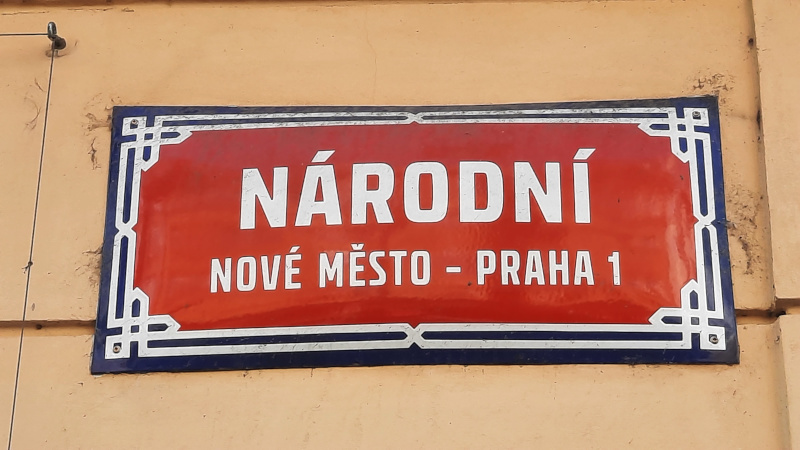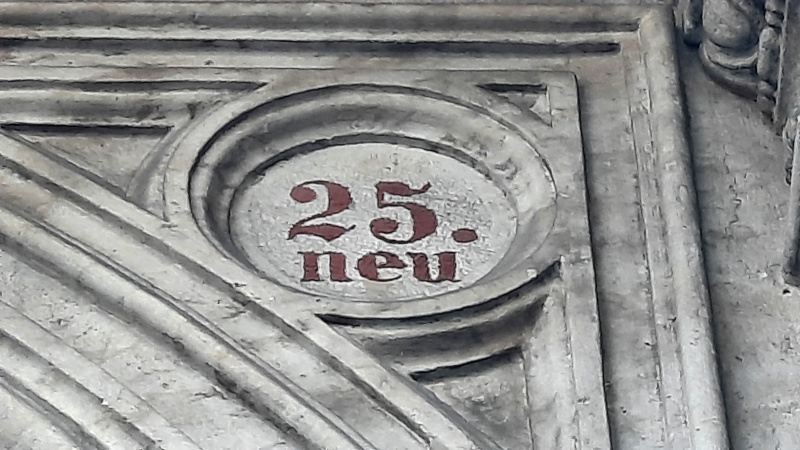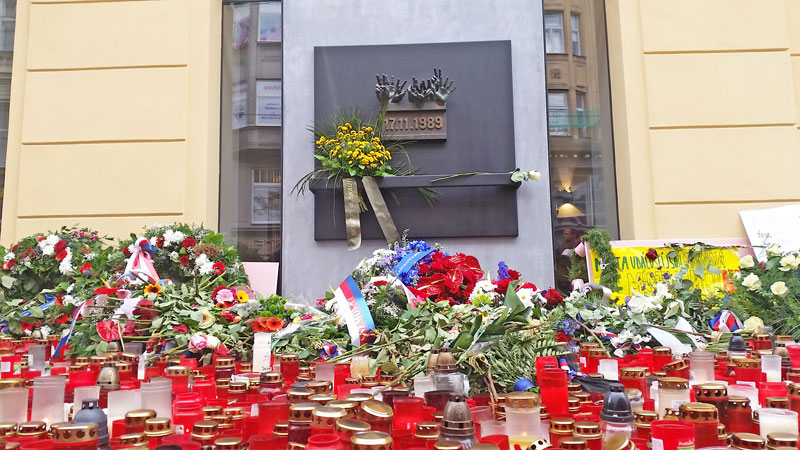Prague Streets – Národní
Národní or “National Street” was formed almost by accident. Back in the mid-13th Century a fortified wall surrounded the Old Town with a moat in front of the wall. Later the New Town would be defined as the area on the opposite side of that moat. The fortified wall stands there until the 1760s when, no longer needed, it begins to be demolished. With the wall demolished and the moat filled a space forms from the riverside close to the present day National Theatre all the way past the present day Jungmann Square, past the present day Wenceslas Square, past the present day Republic Square and back down to the river. It’s the part between the National Theatre and Jungmann Square that we’ll focus on.

Back in 1791 apart from the Prague Fords, only the Charles Bridge spanned the river as a vehicle crossing. The ends of the area in front of the old city fortified wall finished at the riverside on our side there would have been the Nebovid Ford which enabled vehicular traffic to cross the river outside of the fortified area. Maps of the time show that our street is divided. One section by the river is called Voršilska which translates as “the way to Ursula” a reference to the largest building in the area at that time, ST Ursula’s Church and it connects to something called the River Road. The other part of the street was the Nové aleje which ran as far as Jungmann Square and translates as “the New Alley”.
By 1842 we now have a bridge across the river initially known as the Chain Link Bridge which replaces the Nebovid Ford. Our road is still divided but now as well as “the way to Ursula” and the “New Alley” (in German – Neu Allee), the part by the river becomes known as “the place at the Chain Link Bridge”.
In 1848 we have a new Emperor Franz Joseph and this guy was not opposed to renaming things. Our street previously broken into three parts is now unified under the name Ferdinand Street (in honour of his uncle, the previous Emperor) and the bridge is renamed the Emperor Ferdinand Bridge. In the picture below is some detail from number 25 which although finished in 1870 when the street was called Ferdinand Street it bears reference to the old German name of 25 Neu Allee.

In 1881 what had been previously called the Czech Provincial Theatre formally became the National Theatre (Národní Divadlo).
In 1919 in the newly formed Republic of Czechoslovakia most of the Imperial names begin to disappear. Our street now becomes Národní (National Street). The bridge which had been rebuilt and renamed to the Emperor Franz Josef Bridge was itself renamed to the Czechoslovak Legion Bridge.
In 1939 at the start of the Nazi occupation Národní changes to Viktoria Street. It connects to the river road which in 1942 is renamed to Reinhard Heydrich Street and the bridge is renamed to the Smetana Bridge (famous Czech composer).
In 1945 everything went back to how it had been in 1919 and has stayed the same since.
Why Visit Národní?
It’s most famous for the events which happened here on November 17th 1989 when students demonstrating on the 50th anniversary of the death of a student killed by the Nazis in WW2 were stopped in the street by security services. In the ensuing protest/fighting the students inadvertently triggered the Velvet Revolution which would result in the end of the communist government just 6 weeks later.

The biggest draw in Národní is undoubtedly the National Theatre which has the older 19th Century part for Slavic language productions, Opera, Ballet etc and it has the more modern part called Laterna Magika for interactive dance, multimedia and black light etc. You’ll need tickets to access these veunes.
Next would be visiting one of the palaces in the street like the Metro Palace (see Image Theatre on the Black Light post), Adria Palace or Platyz Palace.
Next would be to admire the architecture of the street which is part classical, part avant-garde (Art Nouveau and Rondo-Cubism) and part post-modernist.
Finally you may be using the street to get to local attractions like Slavonic Island, Franciscan Garden and the Franz Kafka turning head by David Cerny.
Something Related or a Few Minutes Away
Prague Streets – November 17th
Politics/History – Velvet Revolution
Activity – Prague City Walking Tour
Famous Czechs – Josef Jungmann
Entertainment – National Theatre (Slavic Opera/Ballet)
Entertainment – National Theatre (Laterna Magika – Modern)
Entertainment – Black Light (Metro Palace)
Food/Drink – Alriso Risotteria (Gluten Free)
Parks and Gardens – Franciscan Garden
Art/Culture – Modern Art of David Cerny
Art/Culture – Spitfire Butterflies
Services – Quadrio Shopping Centre
